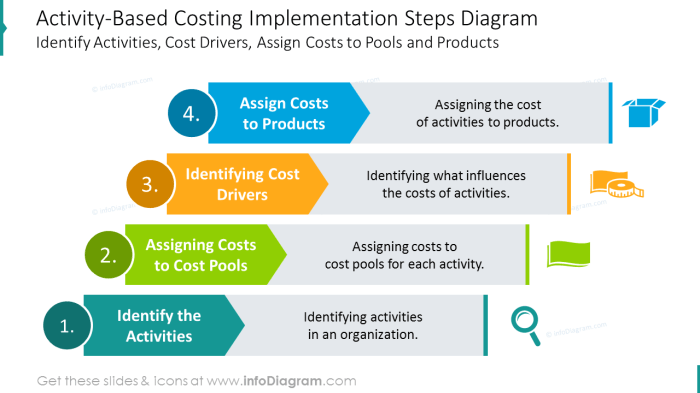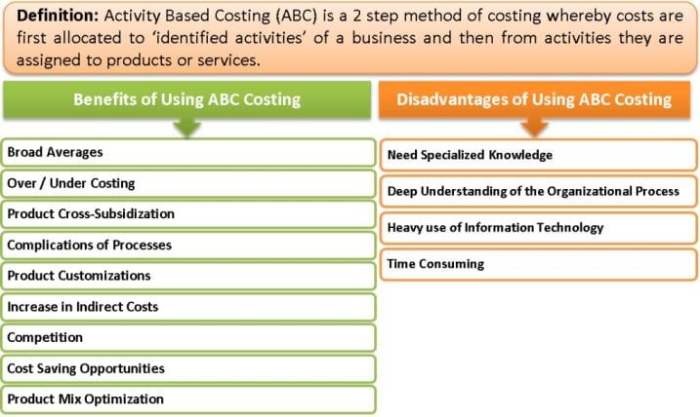Which of the following is true of activity based costing – Which of the following is true of activity-based costing? This question delves into the intricacies of a costing method that revolutionizes cost allocation, providing a deeper understanding of its principles, advantages, and challenges.
Activity-based costing (ABC) stands out from traditional costing methods by considering the activities that drive costs, leading to more accurate cost allocation and informed decision-making. By identifying cost drivers and their relationship with activities, ABC enables organizations to pinpoint the true cost of products and services, optimize resource allocation, and enhance profitability.
Activity-Based Costing (ABC)

Activity-based costing (ABC) is a costing method that assigns costs to products and services based on the activities that are performed to produce them. This differs from traditional costing methods, which allocate costs based on volume-based measures such as direct labor hours or machine hours.
ABC is more accurate than traditional costing methods because it takes into account the different activities that are required to produce different products and services. This allows companies to better understand the true cost of their products and services, and to make more informed decisions about pricing, production, and marketing.
Benefits of Using Activity-Based Costing
There are several benefits to using activity-based costing, including:
- Improved cost accuracy
- Better decision-making
- Increased profitability
Companies that have successfully implemented ABC have reported significant improvements in their cost accuracy and decision-making. For example, one company reported a 20% reduction in its manufacturing costs after implementing ABC.
Challenges of Implementing Activity-Based Costing
There are also some challenges to implementing activity-based costing, including:
- Data requirements
- Complexity
- Cost
The data requirements for ABC can be significant, and the process of collecting and analyzing this data can be complex. This can make ABC a costly endeavor to implement.
Table Comparing Activity-Based Costing to Traditional Costing Methods, Which of the following is true of activity based costing
| Feature | Activity-Based Costing | Traditional Costing Methods |
|---|---|---|
| Cost allocation basis | Activities | Volume-based measures (e.g., direct labor hours, machine hours) |
| Accuracy | More accurate | Less accurate |
| Decision-making | Better decision-making | Less informed decision-making |
Flowchart Illustrating the Steps Involved in Implementing Activity-Based Costing
Start Identify activities Determine cost drivers Allocate costs to activities Allocate costs to products and services End
Role of Cost Drivers in Activity-Based Costing
Cost drivers are the factors that cause costs to be incurred. In ABC, cost drivers are used to allocate costs to activities and products. Common cost drivers include:
- Number of units produced
- Number of orders processed
- Number of customer inquiries
Cost drivers are determined by analyzing the relationship between costs and activities. Once cost drivers have been determined, they can be used to allocate costs to activities and products.
FAQ Guide: Which Of The Following Is True Of Activity Based Costing
What is the fundamental principle of activity-based costing?
ABC allocates costs based on the activities that consume resources, providing a more accurate reflection of the cost of products and services.
How does ABC differ from traditional costing methods?
Traditional methods allocate costs based on volume-related measures, such as direct labor hours or machine hours, which may not accurately capture the complexity of modern business operations.
What are the benefits of implementing ABC?
ABC improves cost accuracy, supports better decision-making, enhances profitability, and provides a foundation for continuous improvement.
What are the challenges of implementing ABC?
ABC requires detailed data collection, analysis, and ongoing maintenance, which can be resource-intensive.


